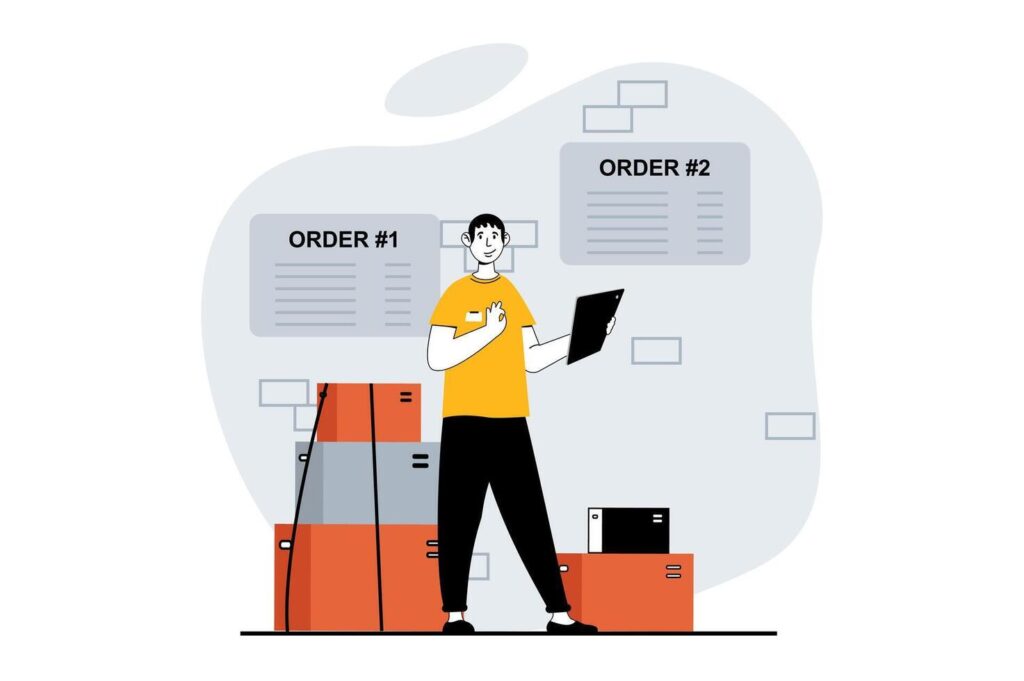There are so many things exciting about launching a print-on-demand t-shirt brand. The opportunity is best suited to you if you have some creativity flair, love designs, and lack the means or inventory to start and sustain the business. We will take you through all the stages in this extensive 7-step guide that will help you successfully begin your own print-on-demand t-shirt business from the ground up.
Table of Contents
ToggleStep 1: Choose Your Niche

Before you even begin drawing designs, you need to define a target audience. Since selling online t-shirts is so competitive, you want to find a narrow niche. What types of t-shirts speak to what groups? Do you represent a hobby or lifestyle that people can associate with or a trend, or possibly a message? Whether the quotes are funny, motivation, or graphic art, you will want to work in a clear niche where you can differentiate yourself as well as bring in steady customers.
Tips for choosing your niche:
– Think about your passion and interest.
– Research on what is trending in fashion or social media.
– Assess the competition – look for gaps that exist in the market.
Step 2 Create Your Designs

Having established your niche, design comes in next. Your designs could be done within your preferred design software program like Adobe Illustrator, Canva, or Photoshop among others. You could do your graphics or you simply outsource it to freelancer graphic artists if you can’t, or even procure pre-designed templates.
For POD, designs should be of high quality and versatile for use with many t-shirt sizes and colors. Ensure that your art fits well on the shirt and looks good with all the fabric colors.
Design tips:
– Simple designs that have impact
– Use contrasting colors with the shirt color
– Ensure that your design looks good in several sizes.
Step 3: Find a Good Reliable Print-On-Demand Partner

You should look for a print-on-demand service to partner with. There are several of the best POD services like Printful, Teespring, Printify, and Gooten. They have an all-in-one solution which will care for the printing, packing, and shipping of your products.
When choosing a POD provider, consider:
– Product variety: Does the service offer a wide range of t-shirt styles and colors?
– Printing quality: Make sure they produce high-quality prints that match your designs.
– Shipping speed: Research POD partners who can get packages delivered within decent time.
– Pricing: You must research both product prices and shipping costs so as to break even or, preferably, earn money on your product.
Step 4: Set up Your Online Store

When your designs are ready, you also want to settle for a print-on-demand service. To sell these print-on-demand products, one would like to create an online store. Platforms include Shopify, Etsy, or WooCommerce that allow you easy integration with print-on-demand services.
When setting up your store:
– Choose a clean, attractive theme that reflects your brand.
– Make sure your product pages are well-organized with high-quality mockups.
– Include a detailed and compelling product description, highlighting the unique features of your designs.
Additional tips for your store:
– Add clear sizing charts to avoid customer confusion.
– Include detailed shipping information and return policies.
– Set up an easy-to-use payment system like PayPal or Stripe.
Step 5: Price Your Tees

Price your t-shirts. This is a sensitive step as you want to balance profitability with market competitiveness. Keep in mind your POD provider will take their cut, so you’ll need to factor that in your pricing structure.
For pricing, you should have in mind these factors:
– Cost of Production: T-shirt cost and shipping.
– Market Prices: Research competitor’s prices in your niche.
– Profit margin: Achieve a decent profit while being affordable.
For instance, if it costs $10 to make a t-shirt, you could sell it for $20–$30 depending on the uniqueness of the design and the target audience.
Step 6: Market Your T-Shirts

Among other significant factors of building up a POD t-shirt business is marketing. With efficient marketing, even the greatest design won’t sell in without it. Some tips include getting your product into in front of a buying potential:
– Social Media: This medium involves most visual-based networks; social media such as Instagram, TikTok, or Pinterest is fantastic to flaunt designs. Make the paid and organic ads about products with the word spreading power through influencers, content usage and giving out stuffs for free.
– Email Marketing: Build an email list and send promotions, new releases, and personalized offers.
– SEO(Search Engine Optimization): Optimize your store for search engines so that your t-shirts will appear when people search for related keywords.
– Affiliate Marketing: Partner with influencers or bloggers who can promote your t-shirts to their followers.
Step 7: Manage Orders and Customer Service

It’s very crucial that you should provide outstanding customer service. The on-demand providers will print and send the order, but it is important to control communication with your customers
– Monitor orders: Follow up the production as well as shipment so you could be informed of how long it takes to ship.
– Customer Service: Be in touch with customer inquiries; you respond right away on sizing issues, shipping concerns, as well as return issues.
– Encourage customers to give reviews and feedback: Positive reviews will enhance credibility, and negative reviews can be an insight on how to improve.
Conclusion
Selling print-on-demand t-shirts can become a very rewarding business when followed through on these 7 steps. The core requirement is to offer the designs that will appeal to your audience, to associate with reliable suppliers, and execute a sound marketing plan. Be patient, continuously perfect your strategy, and you can create a lucrative POD t-shirt business.
About Us
Elevate with Bloom’s Shopify website design
Bloom is the digital marketing agency that has high standards in its Shopify web design in India. Combining creativity along with a set of technical expertise for attraction and tremendous usability, it guarantees conversions and high online presence.












Rahul M.
B2B Service Provider